|
|
Annual hotel openings have nearly tripled over the past five years, according to a recent forecast by Statista. Just who’s expected to fill all these new rooms moving forward? Rather than think in age demographics (baby boomers vs. Millennials), it’s time for the hospitality industry to recognize a powerful yet largely untapped target audience: U.S. Hispanics.
Now taking more vacations across every income level — and spending nearly $300 more per trip, according to research by ThinkNow Research — U.S. Hispanics are a smart consumer segment to pursue. Coupled with their buying power — which is projected to top $1.7 trillion in 2017, according to Statista — the call-to-action for hoteliers is obvious, though questions remain, namely: How can I effectively market to this group?
What drives Hispanics’ travel decisions
|
|
No matter the business, understanding your customer is vital to earning their interest and loyalty. However, unlike other industries currently experiencing disruption from technological advances — like Amazon vs. brick-and-mortar retailers or Uber vs. taxis — travel planning is more heavily based on emotional drivers than convenience. Reaching the travel decision makers and influencing their thought process prior to booking is key. So, what should hotels do to court the growing and influential U.S. Hispanic guest? The first step is to understand what makes this group unique.
U.S. Hispanics have a greater curiosity to see the world compared to their fellow Americans. Research conducted by Wakefield Research and Hampton by Hilton revealed a key travel motivator for the segment: A thirst for experiences and discovery. In fact, 90 percent would travel for a year without pay if money weren’t a concern, eight percent higher than non-U.S. Hispanic respondents.
Additionally, children in U.S. Hispanic families have a 16 percent greater influence on vacation decisions compared to non-Hispanic families, according to a 2017 report from ThinkNow Research. And, for the most part, while Millennials have shown to be less brand loyal, that isn’t the case with this audience. Bicultural Hispanics in the U.S. (first- or second-generation Americans who identify with U.S. culture as well as their Hispanic heritage) have proven to be more brand loyal than less acculturated Hispanics, a reverse in traditional thinking.
Speaking the right language
While U.S. Hispanics of course stay with a wide group of hotel brands, building a strong relationship with this audience requires a true commitment. If there has not been a previous dedicated marketing effort, it’s important that entry into this market be authentic. This means not just settling on some “Spanglish” taglines, but becoming a trusted voice.
Consider this: More than half of U.S. Hispanics find planning and booking a vacation to be difficult. Is this because of a language barrier or have communications not been appropriately tailored to feel inclusive to this and other multi-cultural audiences?
Traditionally, the approach to multicultural marketing was to simply offer language-specific websites. However, just as there has been the need to create device-specific interfaces to maximize the customer experience, there is a similar parallel need in properly targeting these audiences. U.S. Hispanics are bilingual and bicultural, requiring a hybrid approach that reimagines the marketing strategy and delivers a genuine first impression. Hoteliers are encouraged to spend the appropriate time and resources to efficiently, and respectfully, communicate with this potential guest base. After all, would you listen to someone who appears not to understand you, your desires and communication preferences, and then make decisions costing thousands of dollars based on a non-existing relationship?
Earning U.S. Hispanic business
Reflected in countless studies, it’s far more costly to acquire a new customer than it is to keep an existing one. Therefore, brands must ensure their marketing efforts to a niche market like U.S. Hispanics reflect audience-specific insights about what matters to the target to make effective connections that drive business results.
Penetrating a new audience can be tough, especially if you don’t have an existing channel of communication or relationship history. One way to overcome this is to leverage strategic partners and influencers who are immersed in the community, and trusted. Identify those that align with your brand, and utilize tools and platforms that maximize reach and entice audience engagement.
An as example, rbb Communications took this approach for client Hampton by Hilton when creating the U.S. Hispanic-targeted integrated communications campaign, “Soy Seekender” (I am a Seekender), which delivered measurable audience penetration and received major industry recognition: PRSA Silver Anvil and HSMAI Platinum Adrian awards. The agency and brand’s PR and marketing teams collaborated to fully embrace a 360-degree marketing strategy that looked to cultivate true brand champions to spread awareness of key attributes that would stick with this audience. The campaign went beyond contracting a few niche influencers with offers of free room nights and instead employed customized messages, multiple touch points and incentive-based promotions that engaged both ambassadors and consumers. Working with powerful partners such as the WeAllGrow Latina Network, the reach and engagement went deep, exceeding goals by 114 percent and producing more than 7,000 pieces of user-generated content. Strategically launching around Hispanic Heritage Month offered an opportunity to speak to relevant traditions, including travel to visit the family, while also driving an emotional connection with the audience. The conversation continued focusing on themes that historically give special meaning to travel for this group including vacationing with friends and creating lasting memories.
Companies like Toyota (“Más Que un Auto”), Universal Pictures (Straight Outta Compton) and Sprint (The Last Emoji) have also seen marketing success, resonating with U.S. Hispanic audiences. When studying these campaigns, one of the things that becomes immediately apparent is each brand’s understanding of the audience though its customized communications. In Toyota’s case, the campaign showed awareness of the personal status a car has in U.S. Hispanics’ lives. That special relationship leads many U.S. Hispanics to assign their cars super personal monikers. Focusing on this “relationship” and thanking consumers in a genuine way — by rewarding Toyota owners with free custom nameplates for their cars — was powerful with more than 100,000 consumers “cashing in” on the offer.
Connection is key
As hoteliers battle to fill rooms and hotel companies continue to expand and introduce new brands and properties, they should ask themselves whether micro-targeted sets of travelers may be an audience worth considering. Certain multi-cultural groups offer tremendous business potential; however, a tailored marketing approach based on research is a must to effectively reach them and capture their loyalty.
With expected room inventory increases, now is the time to act. The hotel industry should follow the lead of other consumer product companies that have successfully penetrated multi-cultural audiences to target and entice U.S. Hispanics to check out their brands, and ultimately check in for future travel.
***
Lisa K. Ross is President of rbb Communications.

 Lisa K. Ross
Lisa K. Ross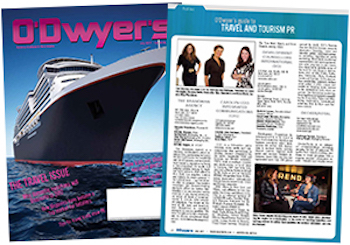

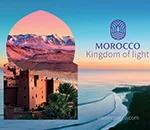 Weber Shandwick is providing PR and marketing communications services to the Moroccan National Tourist Office in New York.
Weber Shandwick is providing PR and marketing communications services to the Moroccan National Tourist Office in New York.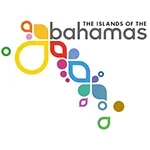 Finn Partners has filed its six-month contract with the Bahamas Ministry of Tourism, Investments & Aviation, which is worth $240K.
Finn Partners has filed its six-month contract with the Bahamas Ministry of Tourism, Investments & Aviation, which is worth $240K.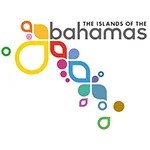 Weber Shandwick wrapped up its work for the Ministry of Bahamas at the end of 2023.
Weber Shandwick wrapped up its work for the Ministry of Bahamas at the end of 2023.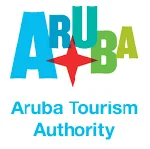 The Aruba Tourism Authority is boosting its budget 29.4 percent to $2.2M at Zeno Group, according to its 2024 contract, effective Jan. 1.
The Aruba Tourism Authority is boosting its budget 29.4 percent to $2.2M at Zeno Group, according to its 2024 contract, effective Jan. 1. As inflation continues to impact spending, consumers are revisiting their list of what they’re willing to spend more of their money on. Luckily for those in the travel industry, experiences seem to be trending up on the “splurge” list.
As inflation continues to impact spending, consumers are revisiting their list of what they’re willing to spend more of their money on. Luckily for those in the travel industry, experiences seem to be trending up on the “splurge” list. 


 Have a comment? Send it to
Have a comment? Send it to 
No comments have been submitted for this story yet.